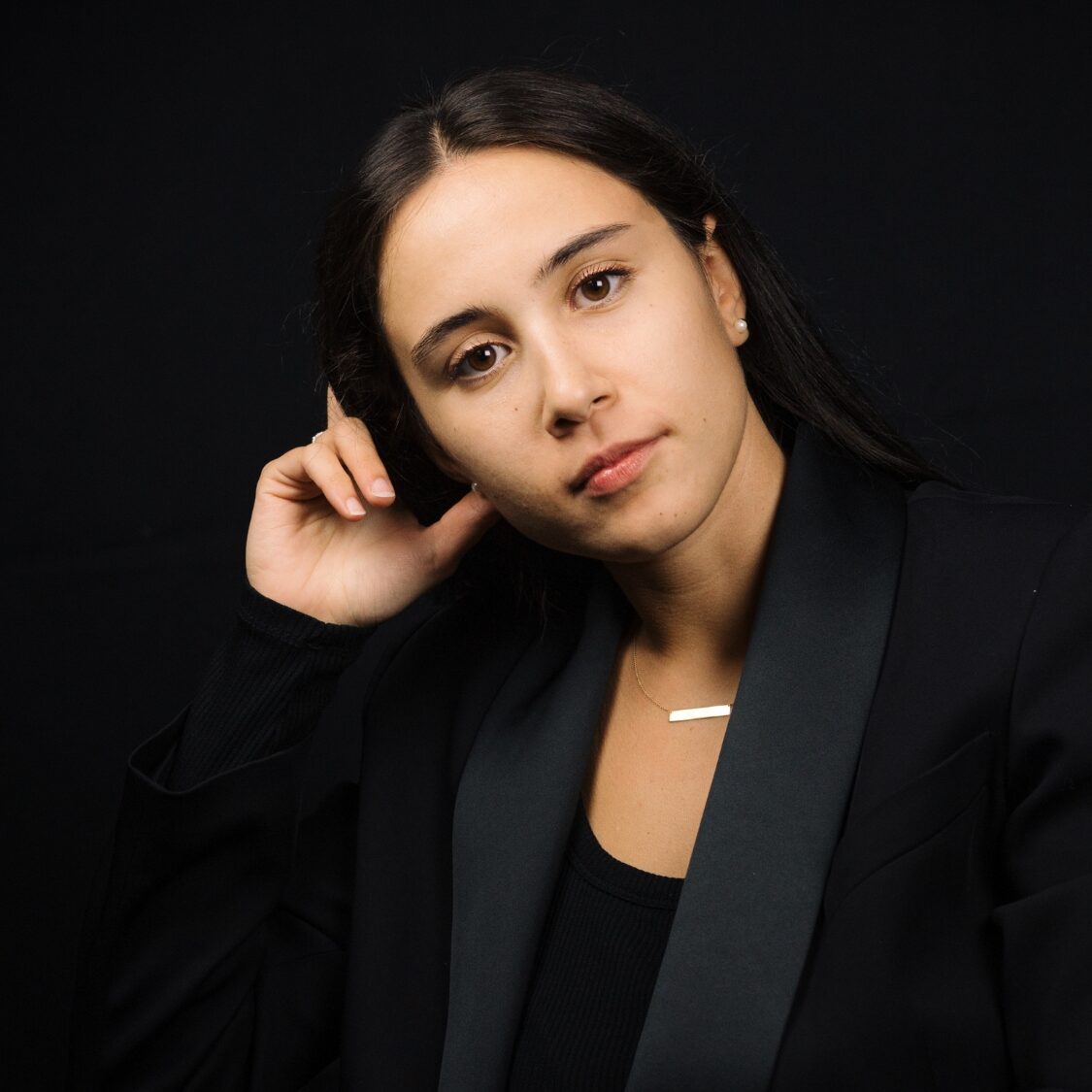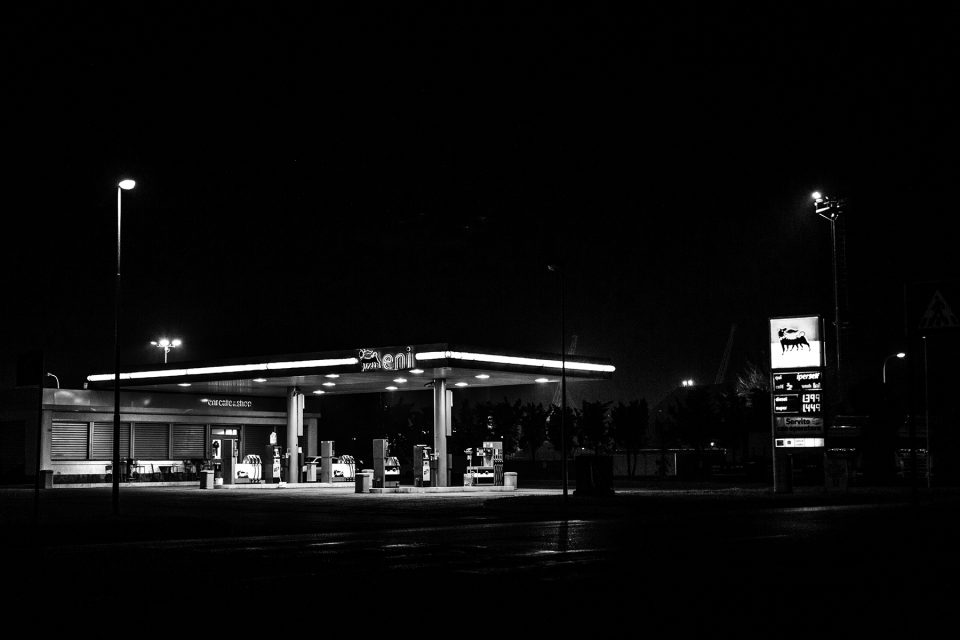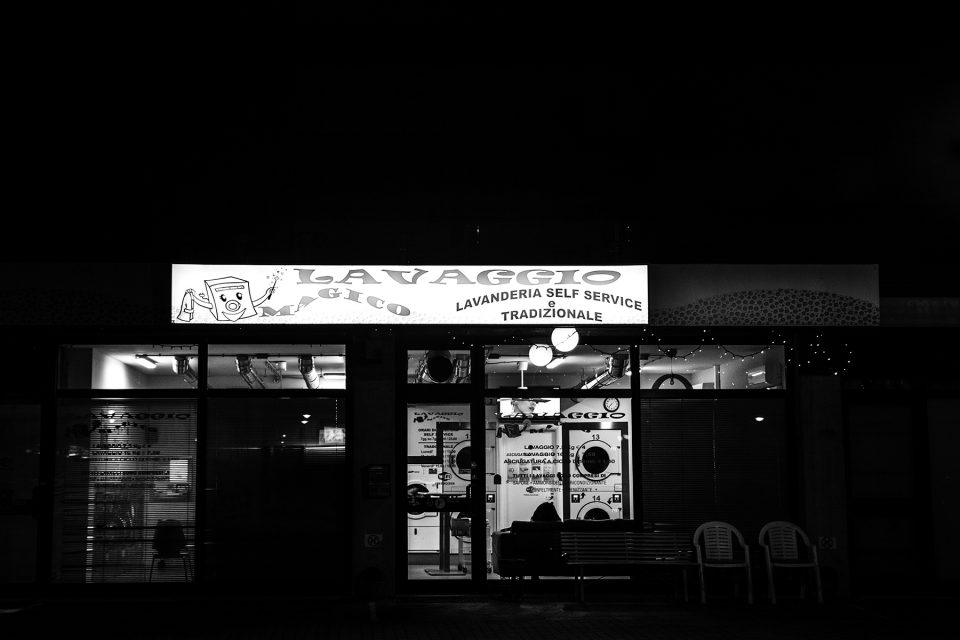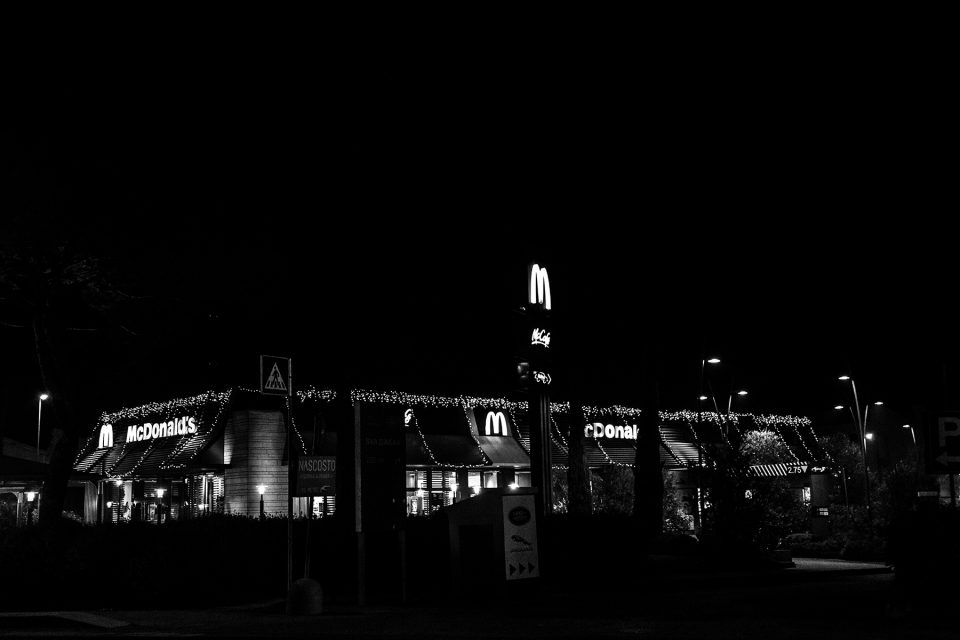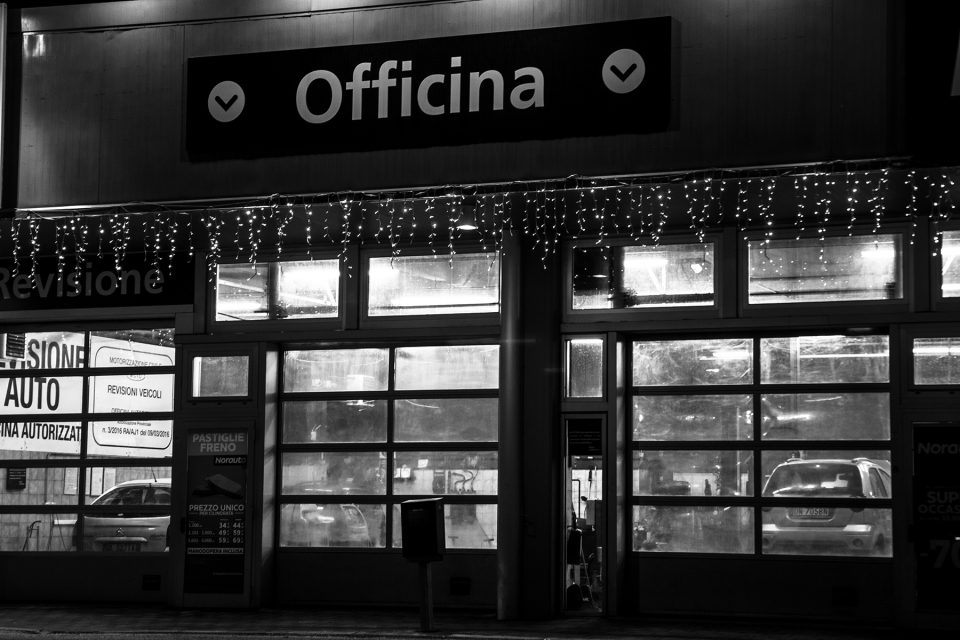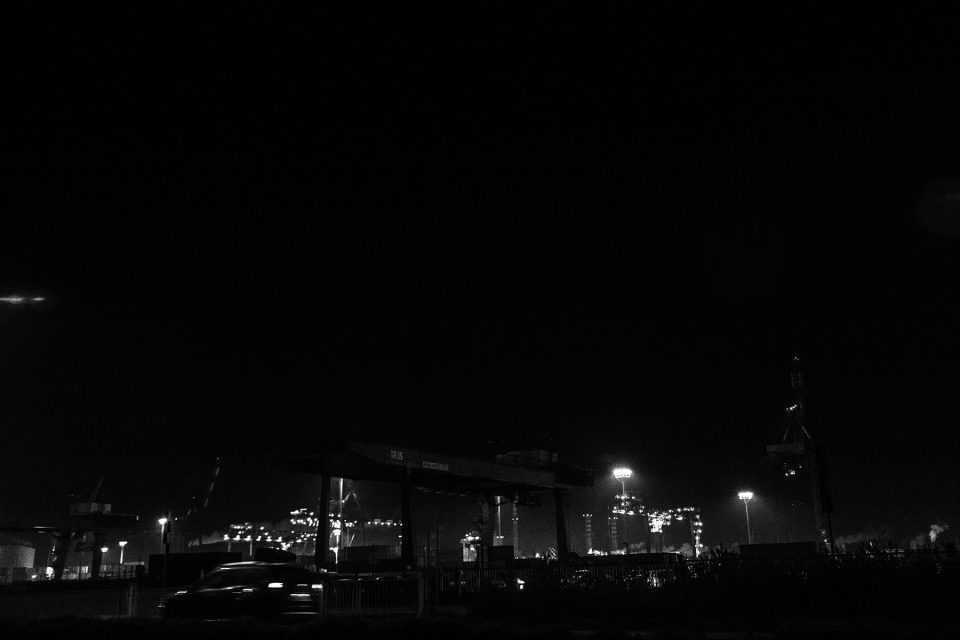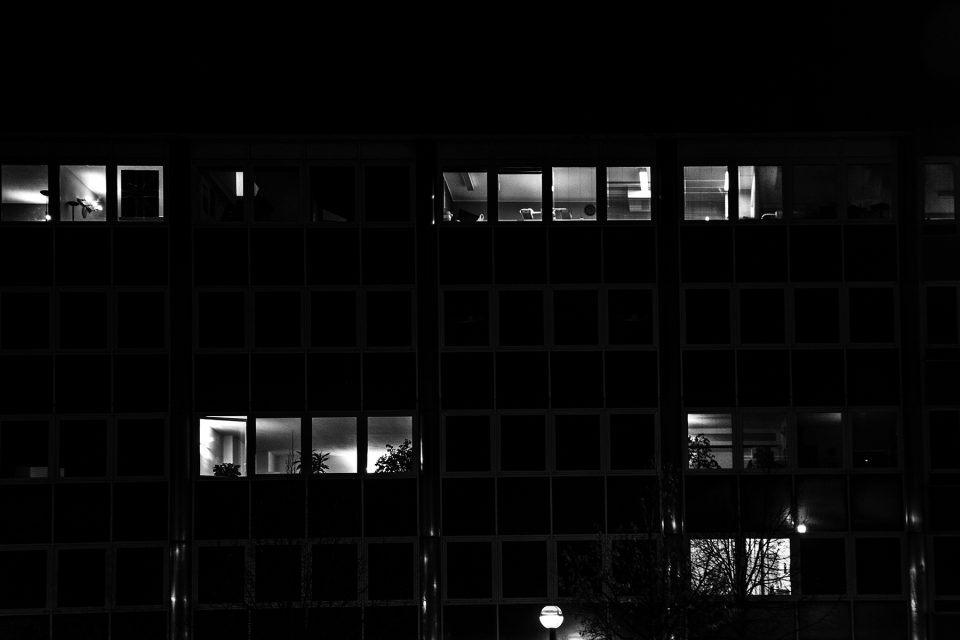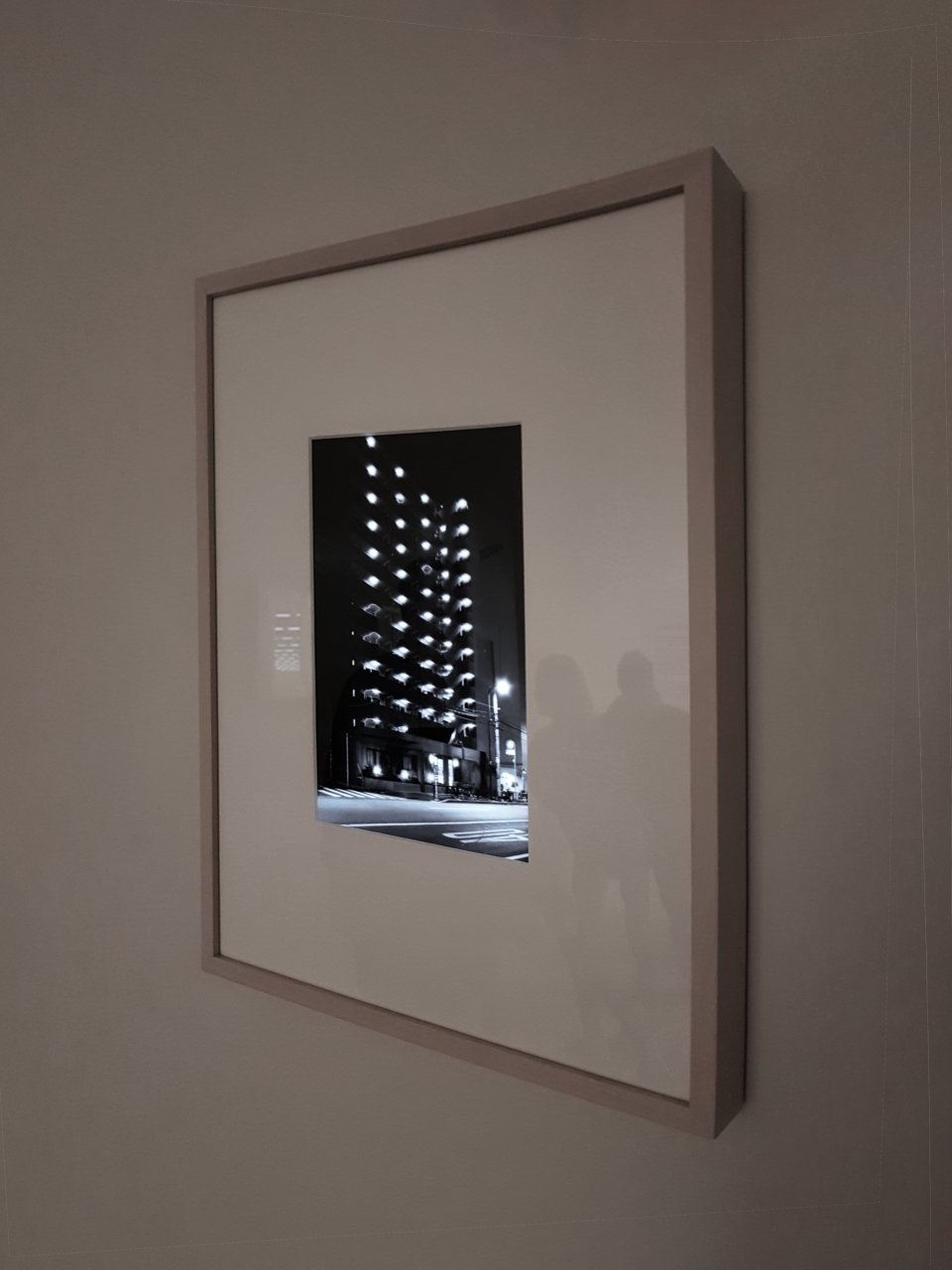Un reportage notturno realizzato tra le vie della mia città
– Ravenna, Italy
Un racconto visivo generato dal contrasto delle luci cittadine sullo sfondo buio della tarda serata. Luoghi dinamici o meno che danno vita, ai lati delle strade, ad un graduale spettacolo visivo.
La presenza umana è allusa: la luce porta con sé un riferimento ad una attività lavorativa appena conclusa o in procinto di iniziare.
Siamo per lo più abituati a fruire gli spazi cittadini di giorno, con la luce naturale del sole. Ci dimentichiamo però che tanti sono i lavori svolti anche durante la sera e la notte. Non vediamo i loro volti diretti ma la scia luminosa del loro operare.
Ricordo bene che dopo diversi mesi dalla realizzazione del progetto, ho avuto modo di ammirare un’esposizione di Naoya Hatakeyama (fotografo giapponese, classe 1958) alla Tate di Londra. Gli scatti raccontavano della città e dello skyline di Tokyo ed erano esposti attraverso l’utilizzo di lightbox.
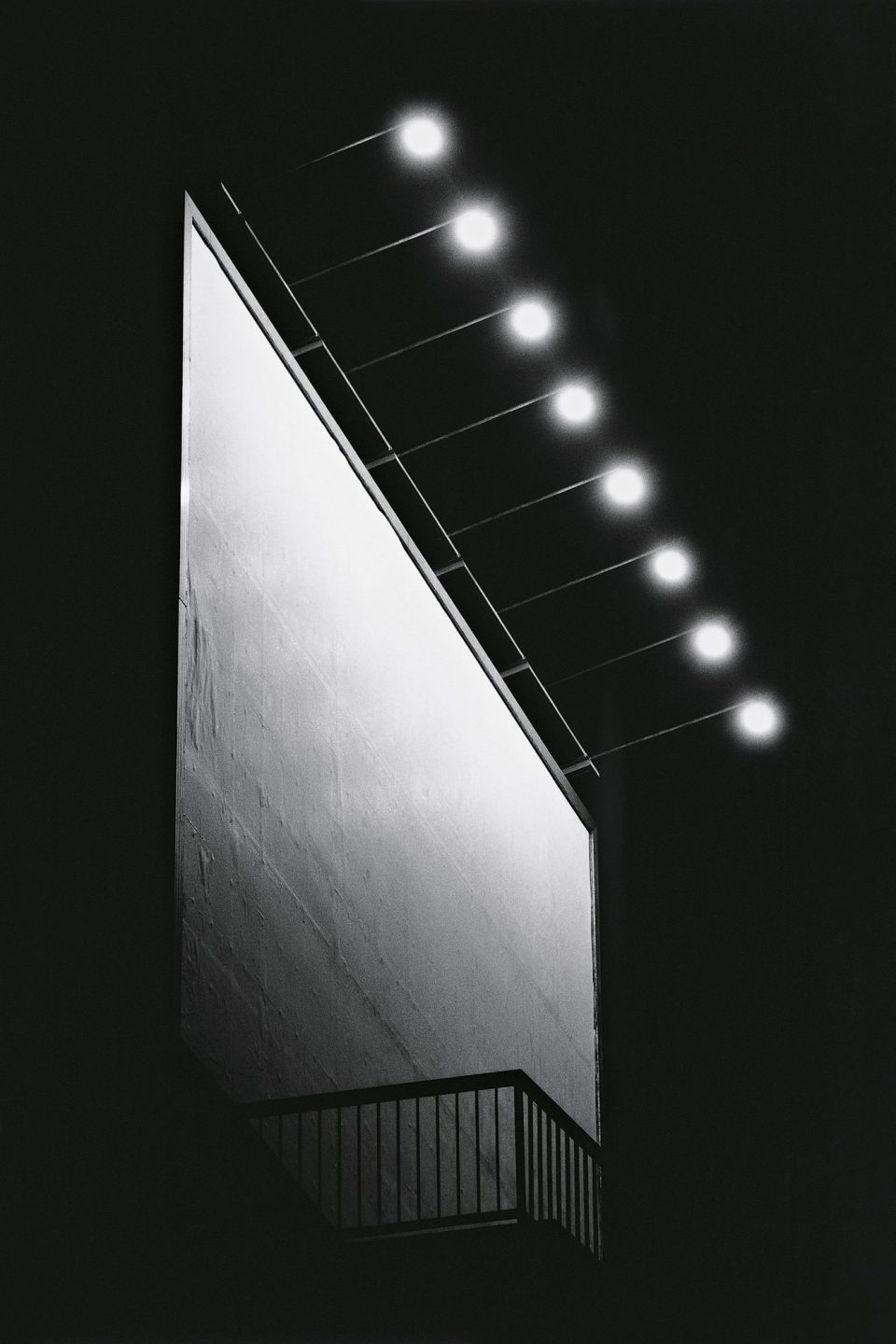
Naoya Hatakeyama, Maquettes/Light #4303 1995, printed 2012, gelatin silver print on paper and transparency on lightbox, 43.8 × 34.9 × 3.5 cm
© Naoya Hatakeyama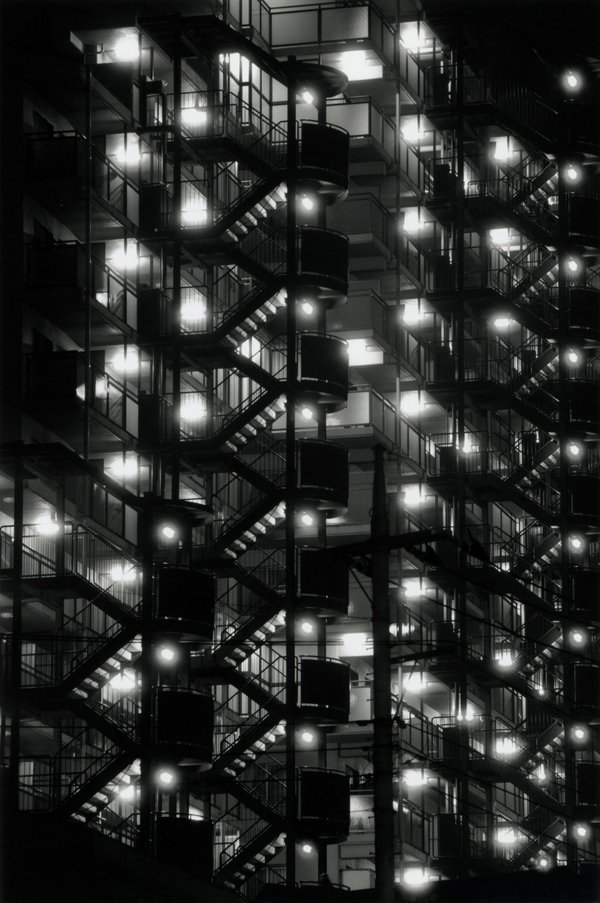
Naoya Hatakeyama, Maquettes/Light #4303 1995, printed 2012, gelatin silver print on paper and transparency on lightbox, 43.8 × 34.9 × 3.5 cm
© Naoya Hatakeyama
Un spettacolo visivo che mi ha fatto ritornare al mio progetto, proprio perchè la volontà di rappresentare la mia città era nata dallo stesso sentimento. Mi sono immaginata i miei scatti esposti esattamente come aveva deciso Hatakeyama. Essi avrebbero preso vita, come avevano fatto le foto dell’autore davanti ai miei occhi.
Riporto di seguito la didascalia (ING) che introduceva le fotografie proprio all’interno dello spazio.
Naoya Hatakeyama’s photographs explore our relationship with both urban and natural landscapes. Here he records patterns of lights found in built environments in Tokyo, Japan.
Hatakeyama describes his approach to the series Maquettes/Light, ‘The night view of Tokyo is especially shimmering. One can often find nightlights regularly lining an exterior passageway that connects the individual units of an apartment building. The appearance of regularly lined fluorescent lights is characteristic of Tokyo’s skyline at night. I strtes taking pictures of this kind of light with a small camera around 1995. I got on a motorcycle every night and went out here and there and gathered the lights of the apartment and other buildings’.
The photographs were taken using a small camera, places on a tripod. When framing a subject, Hatakeyama paid particular attention to its verticality. He adjusted the settings on his camera exposing his black and white film to light for two to ten seconds. For each image the chosen exposure was just enough to reveal a division between a building and the night sky.
Hatakeyama experimented with the display of the photographs. He forst produced them as gelatin silver prints. Feeling something was missing, he made black and white transparencies from the same films. He assembled the original paper prints on these transparencies and placed them on light-boxes. This layering of both paper prints and transparencies emphasised the dark areas of shadow in his images while still allowing light to shine through the highlighted parts. The resulting works on light-boxes feature sharp contrasts, the darkest areas of his images double in density and the brightest points appear more brilliant. Hatakeyama titled the work Maquettes/Light. He felt his images of buildings at night, lit and scaled down, resemble archite
Curated by Yasufumi Nakamori – The George Economou Gallery
